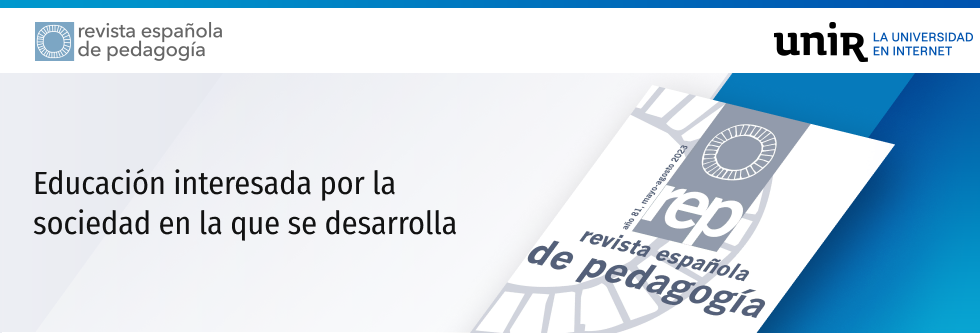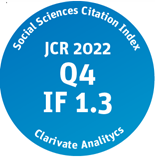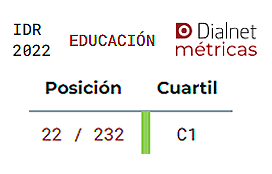Watts, P., Fullard, M., & Peterson, A. (2021). Understanding character education: Approaches, applications, and issues. (Dana Atef Jeries)
Resumen
Educators, including teachers and all professionals involved in the educational process, are fully aware that core elements of education are the personal and social development of the pupils. Teachers play an essential role in allowing their pupils to evolve and become the best version of themselves while being integrated in various social cycles. Clearly, academic achievements also form an integral part of education. However, when facing stressing factors, schools tend to redirect their goals in order to meet the needs of those pressures. An example of a stressing factor is the evaluation of academic progress through tests and examinations. Some teachers have suggested that these exams do not reflect the real abilities and skills of the pupils. Moreover, some of those measurement tools do not serve the ultimate goal of education which is to help the pupils to develop in a holistic manner; personally, academically, and socially. ,
The current book introduces the character education approach and its potential impact on schools encouraging personal and social development of the pupils. The book is structured around seven chapters providing ideas, methods, and practices that are emphasized by character education. ,
The first chapter provides definitions for two key concepts: character, and character education. ‘Character’ refers to the set of qualities producing specific moral emotions that guide the behavior of individuals. Traits that are stably present in one’s character, will shape the true essence of their holder. There are four types of virtues: intellectual, moral, civic, and performance virtues. These virtues are considered the ‘building blocks of character’. Thus, character education is the intentional effort of schools and families to assist young people in understanding and caring about ethical values, along with developing personal and psychological qualities, bearing in mind that character is an ever-evolving process that should be cautiously evaluated and taken into consideration. By doing so, character education offers an inclusive perspective of an individual as a whole entity. Furthermore, the discussed book takes on a broad neo-Aristotelian approach towards character education. From this perspective, character education stresses the education and development of virtues, that are positive and morally worthwhile, so they can help children in the future. ,
In addition, the chapter introduces two approaches to pupils’ personal and social development. The first approach is positive education, which is associated with the elements of positive psychology implemented in education, such as developing a positive mindset and sense of self-efficacy. The second approach is social and emotional learning, describing the process of obtaining skills and knowledge to construct healthy identities, regulate emotions, fulfill personal and collective goals, show empathy, build supportive relationships, and considerately make decisions. ,
The second chapter is dedicated to the teacher’s character and its role in guiding conduct. While it is well documented in educational research, the impacts of the moral and ethical aspects of teaching tend to be marginalized when academic success and preparation for employability are prioritized by education reforms in schools. As a consequence, along with the constant discussions about schools’ assessment scores and accountability of teachers, teacher-training programs convey the message that a teacher’s purpose ,
is limited to passing subject knowledge and technical skills to pupils. However, despite the minor emphasis on the teacher’s character and qualities that ought to be demonstrated, there is no doubt that teachers’ character has an effect on their personal and professional behaviour. A teacher is exhibited as a role model, influencing the pupils’ character development, attitudes, and conduct, both consciously and unconsciously. Moreover, the chapter elaborates on the character virtues of a ‘good’ teacher, for instance: confidence, humility, teamwork, kindness, empathy, humour, and good communication. ,
The third chapter discusses the appropriate environment for character education. Usually, school websites and policy documents contain the main vision and aspirations of a school. However, in order to harvest the fruits of those visions, the school needs to ensure translating these intentions into concrete actions. A school should establish a clear set of principals guiding the social and emotional development of the pupils. Involving pupils in the process contributes to creating a shared mission that aims to develop their character. It is the role of a school community to select a set of core virtues and direct it in certain ways for it to be considered as positive. The chosen virtues should correspond with the values and culture that the school attempts to promote. Furthermore, the school’s physical environment is vital to reflect the school’s vision. A creative, well cared-for learning environment is generated by creative teachers who design and decorate the space in a way that supports character education, and also by proud pupils displaying their work on the walls and celebrating their success. ,
The fourth chapter explains the relation between character education and good behavior for learning. The link between character and behaviour is clarified when character is considered as the guide to the thinking, reasoning, and conduct of an individual. Schools which adopt the character-based approach to behaviour lean toward using strategies aimed at developing pupils’ intrinsic motivation to behave accordingly, and their ability to make good decisions when managing their own behaviours. Those strategies develop virtues such as respect, compassion, empathy, responsibility, etc. In other words, having good character helps the pupils in choosing the right behaviours and for the right reasons. School behaviour policies are key components in setting out the behavioural expectations of pupils. Although there is no guarantee that those expectations are parallel to the ones at home, the most effective solution is to have a home-school agreement. Following the character education, a school can use various approaches which can encourage positive behaviour for learning, such as giving verbal praise, modelling, assigning roles and responsibilities to pupils, informing parents about positive behaviours at school, etc. Furthermore, this chapter illustrates several positions of behavioural management. Among the approaches mentioned, one of the often used ideas is giving rewards and sanctions. Nonetheless, rewards and sanctions can be useful in promoting good behaviour if they are applied carefully and intentionally within a character based approach. ,
Chapter five argues the immersion of character education within the curriculum. The fact that character education does not have a constructed curriculum allows teachers to exhibit their skills in planning creative personalized character education fitting their schools. Therefore, teachers should integrate the learning of character and virtues in the contents across the curriculum in a way that is meaningful and interesting, while providing the opportunities for pupils to reflect on what they are learning and linking it to their personal life. For example, character can be taught in a computer science class by focusing on key ethical issues regarding the mergence on new technology and being wise users who are able to safely navigate in the virtual world. An additional opportunity to teach character learning is through distinct enrichment activities happening in after-school hours. These activities, including sports club, outdoor learning, and others, develop the pupils’ interests beyond the borders of the formal curriculum. ,
Chapter six reflects on character education beyond the school gates through social action. Also referred to as ‘service-learning’, social action is considered a core pedagogical strategy in character education, and it is defined as practical actions by young people in service of others to create a positive change. Service-learning consists of an on-going process of action, reflection, communication, and negotiation, which connects the development of pupils’ character to their role as citizens. Therefore, service-learning aims to balance between personal and community ,
development. When pupils participate in a meaningful social action, they understand educational and moral purposes behind it. Also, teachers take an important part in connecting the pupils’ experiences in school, with their actions outside of it. By creating an open, discursive, and democratic school environment, the school community builds a strong foundation for democratic forms of social action beyond its gates. ,
The final chapter offers additional practices and resources that can be used as a part of character education. The first method suggested to teach character is through stories. Using stories is a popular choice to learn about morals and virtues as stories combine imagination and entertainment, and they are considered as a powerful method to engage children’s minds and emotions, and enabling them to experience new situations and contexts. Another approach offered is using moral dilemmas. For the purpose of character education, teachers can use moral dilemmas to encourage pupils to reflect on real-life situations requiring and ethical action. As a result, pupils can debate, explain, and justify their chosen response. Furthermore, this chapter mentions using moral exemplars as a vehicle to teach character education. As previously mentioned, pupils can learn via observations, thus, the actions and behaviours of adults in their surroundings imply moral meaningful messages to the pupils. However, teachers tend also to use moral exemplars from ‘real life’ or literature in order to inspire the pupils to absorb character virtues. Moreover, the chapter proposes a list of resources, organizations, and institutes for further professional development on applying character education in schools. ,
In summary, this book is a valuable reading for teachers or educators attempting to understand character education and dive in the process of implementing it on the educational field. It defines, explains, and displays the components of character education and its contribution to developing virtues and ethics in young children. The book connects between theory and practice in a simplified manner, while offering a combination of several insightful case-studies and self-reflective activities in order to illustrate and contextualize the ideas discussed. ,
Dana Atef Jeries ■ ,
Citación recomendada | Recommended citation
Jeries, D. A. (2023) . Watts, P., Fullard, M., & Peterson, A. (2021). Understanding character education: Approaches, applications, and issues. (Dana Atef Jeries). Revista Española de Pedagogía(1). https://www.revistadepedagogia.org/rep/vol0/iss1/53
Licencia Creative Commons | Creative Commons License
Esta obra está bajo una licencia internacional Creative Commons Atribución-NoComercial 4.0.
This work is licensed under a Creative Commons Attribution-NonCommercial 4.0 International License







Commentarios | Comments
Watts, P., Fullard, M., & Peterson, A. (2021).
Understanding character education: Approaches, applications, and issues.
McGraw-Hill Education. 168 pp.